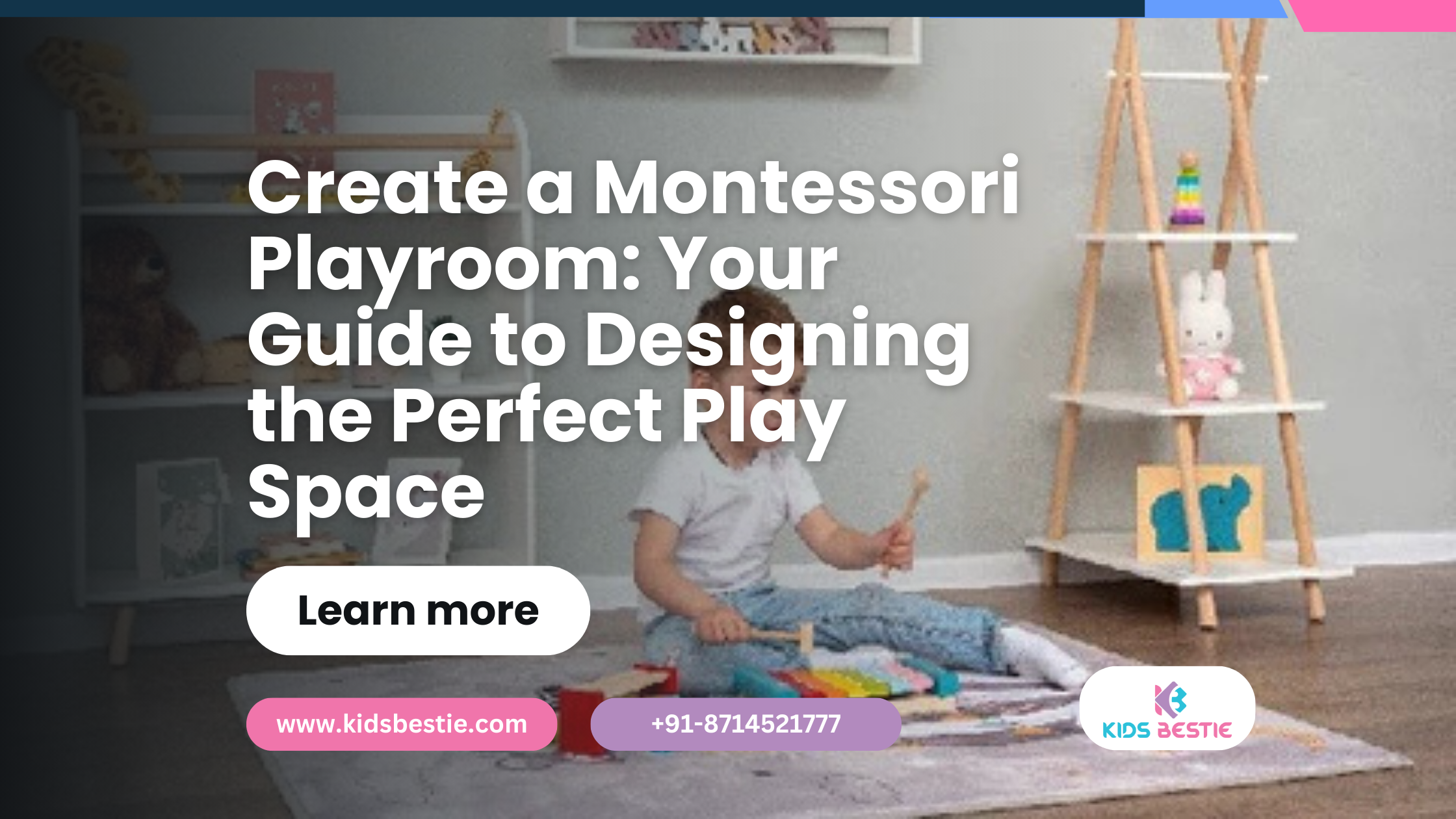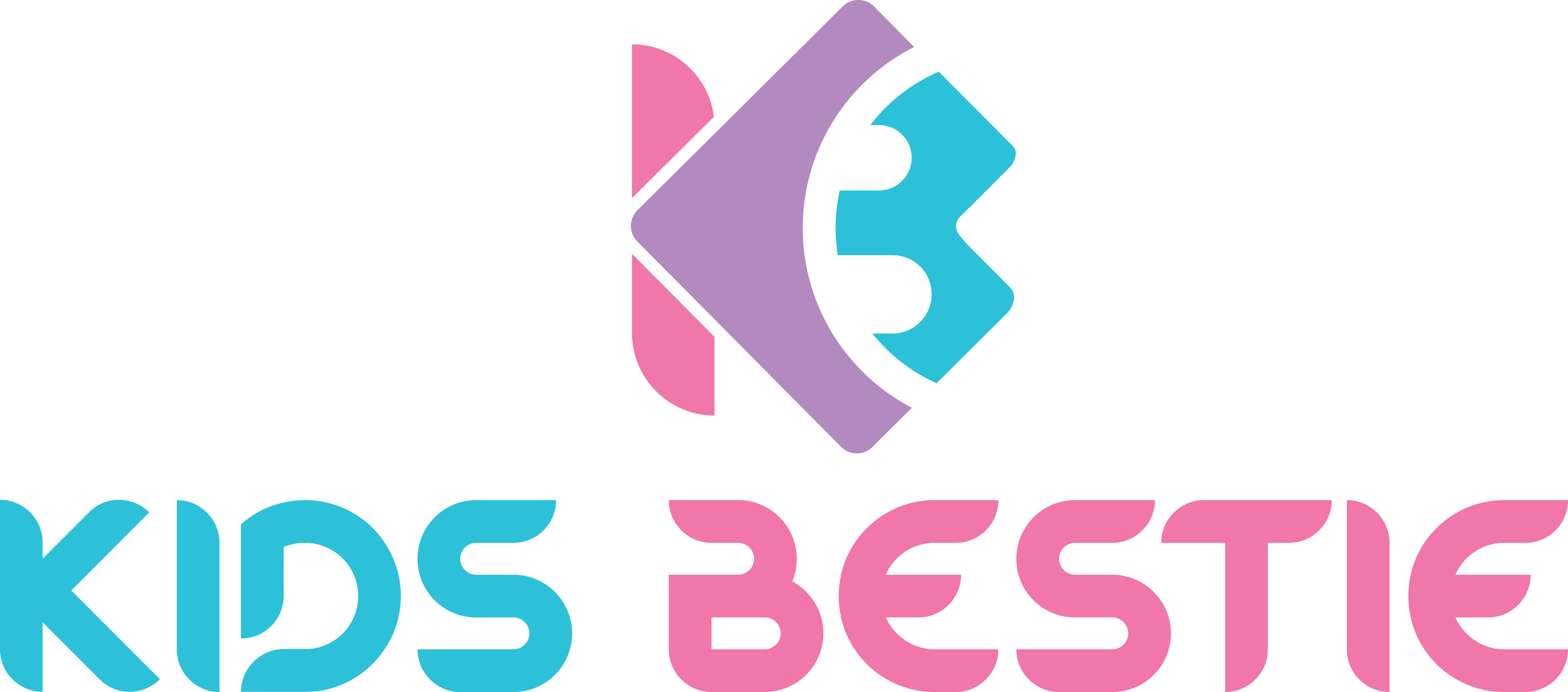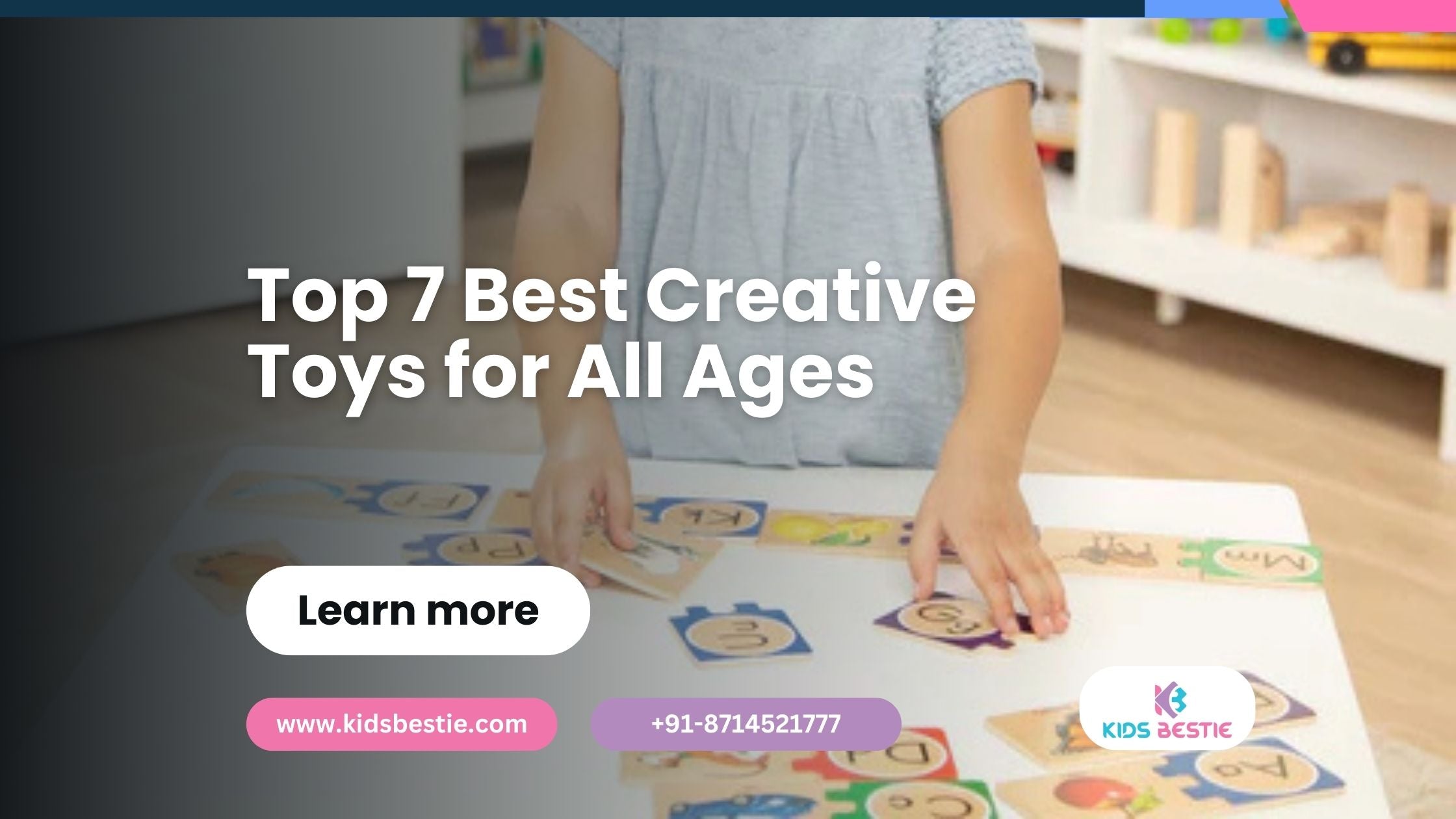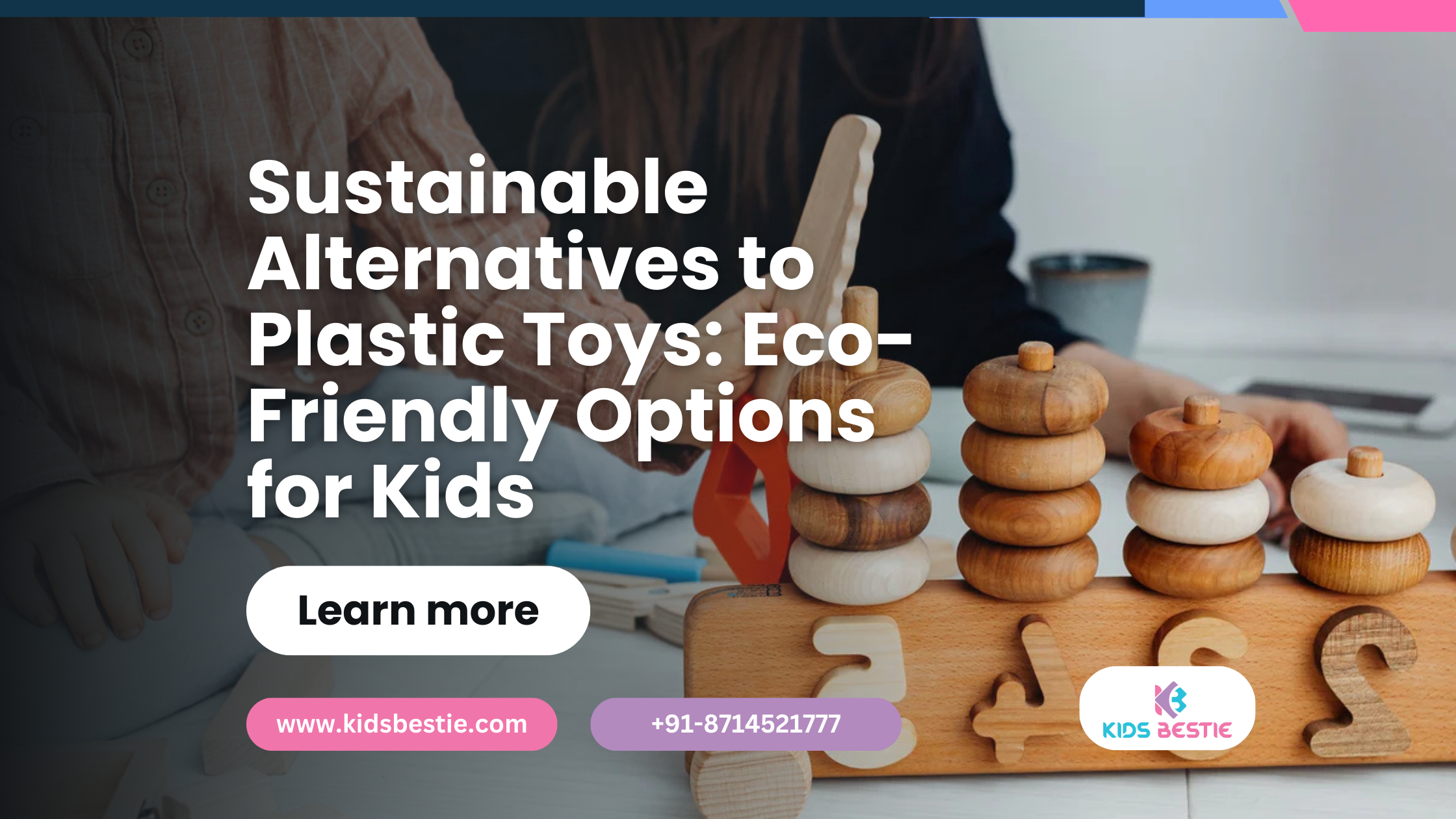
Create a Montessori Playroom: Your Guide to Designing the Perfect Play Space
In this guide, we’ll walk you through everything you need to know to create a Montessori-inspired playroom a space that promotes independence, creativity, and joyful learning.
In this guide, we’ll walk you through everything you need to know to create a Montessori-inspired playroom a space that promotes independence, creativity, and joyful learning.
Whether you’re a first-time parent or a seasoned pro looking to revamp your child’s space, this guide will help you make smart, stress-free decisions without needing a fancy interior designer or breaking the bank.
Let’s dive in.
What is a Montessori Playroom? (And Why It Works)
Let’s start with the basics.
A Montessori playroom is not a room filled with toys.
It’s a space designed with purpose where every shelf, toy, and corner encourages your child to think, explore, and learn independently.
Imagine this:
You walk into a room where your child quietly focuses on threading wooden beads, then calmly walks over to pick a puzzle from an open shelf. Everything is accessible. Everything has a place.
That’s the Montessori magic calm, focused play that builds confidence and real-life skills.
And guess what? You don’t need a big budget to make it happen.
Why More Indian Parents Are Choosing Montessori Playrooms
In India, the Montessori movement is picking up steam. And for good reason:
-
Indian parents want their kids to be independent early
-
Homes are getting smaller, so minimalistic, multi-functional setups work better
-
Screen time is rising Montessori playrooms give a peaceful, screen-free alternative
At Kids Bestie, we’ve seen a 2X increase in parents searching for open-ended, wooden learning toys a clear sign that more families are looking for mindful playtime at home.
Step-by-Step Guide to Creating a Montessori Playroom at Home
1. Pick a Calm, Clutter-Free Space
You don’t need a huge room.
Just a corner of the living room, bedroom, or even a balcony with shade can work.
What matters is this:
-
It’s safe and child-friendly
-
There’s enough natural light
-
You can organize it with low shelves and minimal distractions
Bonus Tip: Keep the walls neutral. Avoid too many posters or bright, loud themes. Simplicity helps focus.
2. Use Child-Sized Furniture
Why? Because Montessori is all about independence.
Use:
-
Low shelves
-
A child-sized table and chair
-
Floor mats or rugs for ground play
When kids can reach their own toys or clean up themselves — it builds confidence.
You’ll be amazed how quickly they learn responsibility.
3. Focus on Quality, Not Quantity (Less Is More)
In a Montessori playroom, every item has a purpose.
Instead of 30 random plastic toys, go for:
-
5–6 wooden toys that teach a skill
-
1 open-ended puzzle
-
1 pretend play set (like cooking or cleaning tools)
-
1 practical life activity (like cloth folding or button boards)
💡 Rotate toys every 2 weeks to keep things fresh without clutter.
4. Organize by Activity Zones
This is where the magic happens.
Divide the space into clear zones:
-
Art corner – crayons, paints, and paper
-
Pretend play – dolls, mini kitchen, or market stall
-
Sensorial play – texture boards, water play trays
-
Fine motor skills – puzzles, peg boards, sorting trays
-
Reading nook – a low shelf and 5–6 storybooks
Everything is neatly displayed and easy to access — no mess, no stress.
5. Use Natural, Open-Ended Toys
Montessori toys are not battery-operated.
They’re made of wood, cloth, or metal, and encourage open-ended play.
For example:
-
Instead of a singing doll, offer a wooden animal set
-
Instead of light-up plastic cars, give building blocks
-
Instead of loud learning apps, go for a wooden alphabet puzzle
Kids Bestie has handpicked Montessori-inspired toys made from child-safe, eco-friendly materials. Our bestselling range includes:
-
Magnetic alphabet sets
-
Practical life kits (spoons, tongs, cleaning brushes)
-
Open-ended building planks
These toys grow with your child and teach life skills naturally.
6. Involve the Child in Setup
Here’s a Montessori secret: Let your child help set up the playroom.
They’ll:
-
Feel ownership
-
Know where things belong
-
Learn to organize and clean up on their own
Even toddlers love placing toys on shelves or rolling up a mat.
7. Keep It Evolving with Age
Montessori setups change as your child grows.
Here’s a quick guide:
| Age | Focus | Toy Ideas |
|---|---|---|
| 1–2 yrs | Sensory play, movement | Ring stackers, texture boards |
| 2–3 yrs | Fine motor, practical life | Peg puzzles, pouring sets |
| 3–4 yrs | Pretend play, counting | Dollhouse, number trays |
| 4–5 yrs | Pre-literacy, logic | Alphabet kits, pattern blocks |
Adjust shelves, swap toys, and update zones every few months.
Why a Montessori Playroom is a Game-Changer for Your Child
Let’s break down the real benefits:
✅ Promotes independence – Kids do things on their own, building confidence
✅ Improves focus – Minimal distractions = better concentration
✅ Encourages real-life skills – Pouring, folding, sorting = life prep
✅ Reduces tantrums – Clear structure and fewer choices help regulate emotions
✅ Strengthens parent-child bond – Shared play with intention, not chaos
Parents who’ve set up Montessori spaces often tell us:
“My child is calmer, more focused, and actually tidies up without me asking!”
That’s the power of mindful design.
FAQs
Q: What is the best age to start a Montessori playroom?
A: You can start as early as 6 months. For toddlers and preschoolers, it’s ideal. The space and materials can evolve as your child grows.
Q: How do I make a Montessori playroom in a small space?
A: Use a low shelf in a corner of the living room. Add a small mat, a few open-ended toys, and a reading basket. Less is more.
Q: Are Montessori toys expensive?
A: Not always. You can start with basic wooden puzzles, blocks, or sensory bottles. DIY options also work well. Brands like Kids Bestie offer budget-friendly Montessori toys made in India.
Q: Should I include electronic toys in a Montessori playroom?
A: No. Montessori environments avoid electronic or flashy toys. Stick to natural materials that engage touch, coordination, and thinking.
Q: How often should I rotate toys?
A: Every 2–3 weeks. Observe your child if they lose interest or stop playing with something, rotate it out.
Final Thoughts: Make Playtime Meaningful
Designing a Montessori playroom isn’t about perfection it’s about intention.
When you create a space that’s calm, clutter-free, and filled with meaningful activities — you’re helping your child grow into a curious, confident, and independent thinker.
At Kids Bestie, we believe in play with purpose. Our Montessori collection is built to support your child’s natural development through thoughtfully crafted toys that are safe, engaging, and fun.
Explore our store to build your perfect playroom today.
👉 Visit: www.kidsbestie.com



